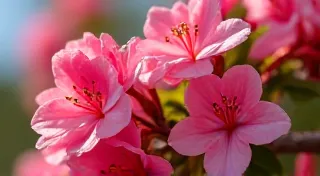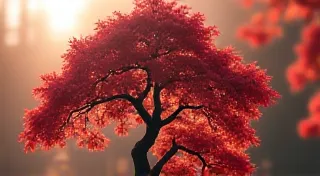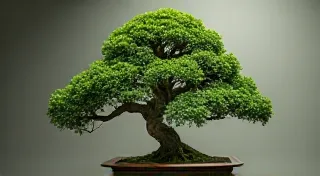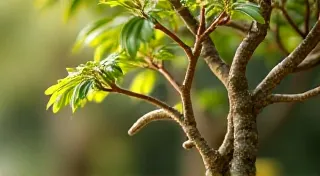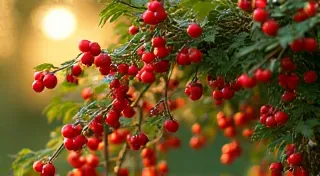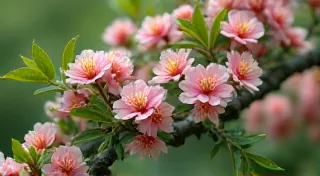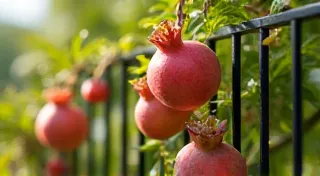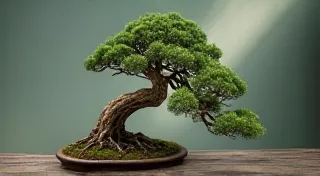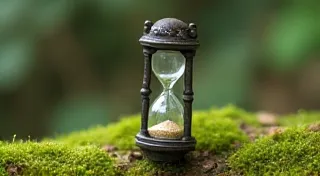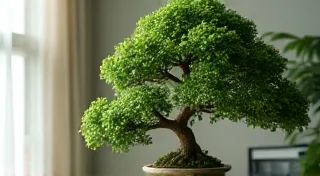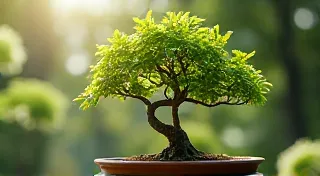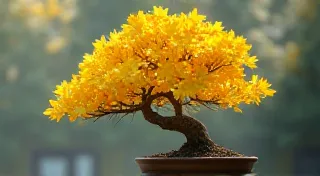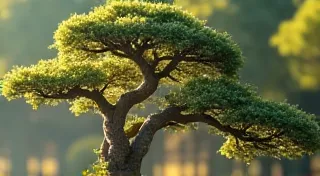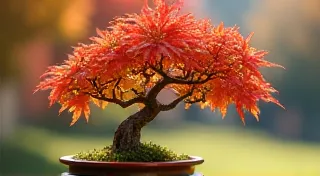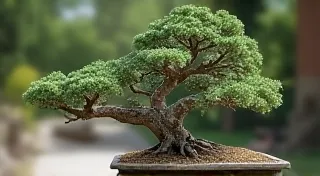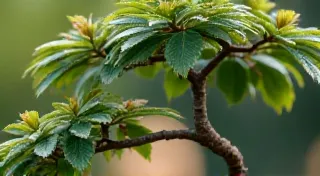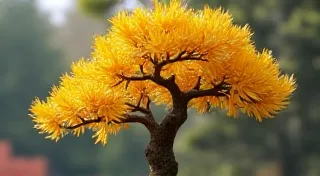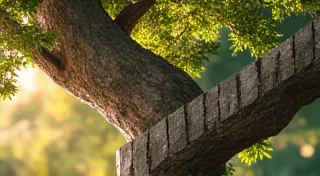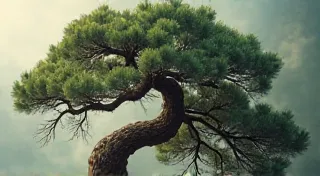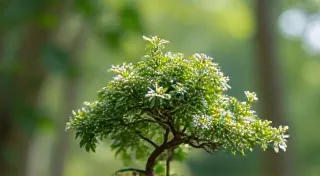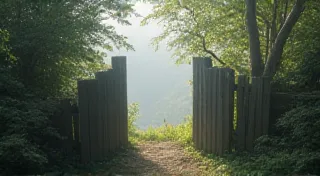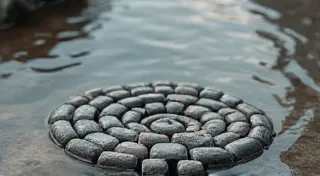Growing Bonsai Trees: A Deep Dive into Specific Species
Welcome to a world of miniature majesty! For centuries, the art of bonsai has captivated enthusiasts worldwide, offering a unique blend of horticulture and artistry. It's more than just growing a small tree in a pot; it’s about shaping a living sculpture that reflects nature’s beauty and resilience. This guide will explore the fascinating world of bonsai, from the foundational principles to advanced techniques and diverse species.
Many aspiring bonsai enthusiasts are drawn to the vibrant colors of the Japanese Maple bonsai. Its intense hues and graceful form make it a truly stunning centerpiece. It’s important to note the color change in Japanese maples is heavily influenced by temperature and nutrient levels. For those seeking a more manageable starting point, the Chinese Elm bonsai is an excellent choice. Its resilience and adaptability make it a favorite among beginners, allowing you to focus on learning the basics of shaping and styling. The Chinese Elm is particularly well-suited for indoor environments. The rich autumn colors of a Crabapple bonsai are also hard to resist! Consider the variety of Crabapple you select as some boast more profuse blooms and smaller leaves.
Beyond the maples and elms, the world of bonsai offers a breathtaking spectrum of choices. The classic elegance of Boxwood bonsai has graced gardens for generations, known for its dense foliage and ability to withstand heavy pruning. The striking form of a Hinoki Cypress bonsai embodies strength and majesty, often styled to resemble ancient, windswept trees. For a touch of exotic flair, consider a Ginkgo bonsai, a living fossil that brings a sense of ancient history to your miniature landscape. It's important to note that Ginkgo bonsai can be messy as they drop their leaves in autumn.
If you’re looking for something unusual, the Dwarf Ponderosa Pine bonsai provides a taste of the mountains in miniature, showcasing the rugged beauty of the American West. The delicate blooms of a Dwarf Pomegranate bonsai offer a delightful surprise, especially when grown successfully, and the resulting miniature fruit adds a unique charm. And for those seeking a challenge, the often-complex care of a Serissa Foetida bonsai, with its common troubleshooting needs (including leaf drop and pest infestations), can be a rewarding experience.
Understanding the Foundations: Essential Bonsai Principles
Before we dive into specific species, let's establish a few core principles that underpin all bonsai cultivation. These include understanding soil composition, watering techniques, light requirements, and the importance of proper pruning. Bonsai soil isn't your average garden soil; it needs to provide excellent drainage and aeration, preventing root rot. A common mix includes akadama, pumice, and lava rock. Watering is a delicate balance – too much can lead to root suffocation, while too little can cause dehydration. Observe your tree's leaves and soil moisture to determine its watering needs. Adequate light is essential for photosynthesis and overall health, and the amount varies significantly depending on the species. Pruning, both structural and maintenance, is critical for shaping and maintaining the tree’s desired form. Understanding the difference between these two types of pruning is the first step to mastering bonsai aesthetics. Wiring, while a more advanced technique, is used to gently guide branches into desired positions, creating a dynamic and visually appealing silhouette.
Evergreen Options and Fruiting Delights
Evergreen bonsai trees offer year-round beauty and structure. The techniques for shaping and maintaining a Juniper bonsai are essential for any aspiring bonsai artist, encompassing various styles like cascade and multi-trunk. The care considerations for a Larch bonsai, with its unique seasonal beauty – losing its needles in winter – differ significantly from those of evergreens, requiring adjustments to watering and fertilization. For something truly different, explore the intricacies of growing an Korean Hornbeam bonsai and understanding its unique characteristics – it’s a deciduous tree with interesting branching patterns.
For those who appreciate the reward of fresh fruit, a Fig bonsai is a rewarding choice, particularly when you understand the propagation techniques involved – often through cuttings. Similarly, the fruit production of a Cotoneaster bonsai can be maximized with careful attention to its needs and strategic pruning to encourage branching.
Beyond the Basics: Advanced Techniques & Artistic Concepts
The art of bonsai extends far beyond simply keeping a tree alive. It’s about shaping a narrative, evoking emotion, and connecting with the natural world on a deeper level. Our guides delve into more advanced concepts, exploring techniques for creating visually stunning and emotionally resonant bonsai.
Consider the symbolic power of resilience. Trees, especially bonsai, often endure harsh conditions, developing character and strength in the process. The concept of “The Gnarled Narrative: Bonsai and the Echoes of Resilience” explores this profound connection between the art form and the enduring spirit of nature.
“Ephemeral Kingdoms: Capturing Bonsai’s Fleeting Bloom” delves into the appreciation of these transient moments and how to best capture their essence in your bonsai creation. Understanding the triggers for bloom (light, temperature, humidity) is crucial for consistent flowering. Bonsai are living sculptures, continually evolving with the seasons.
Indoor Bonsai & Styling Secrets
Bringing the tranquility of a miniature tree into your home is a wonderful way to enhance your living space. A Ficus Retusa bonsai is particularly well-suited for indoor cultivation, offering a touch of tropical elegance. Our guides provide detailed advice on indoor care, including lighting, watering, and fertilization, ensuring your bonsai thrives in a confined environment. We also share styling secrets to help you shape your bonsai into a work of art, exploring different bonsai styles like formal upright, informal upright, slanting, and cascade.
Essential Keywords & Further Exploration
Whether you're just starting your bonsai journey or looking to refine your skills, this website is your comprehensive resource. We are dedicated to providing you with the knowledge and inspiration you need to create your own miniature masterpieces. Remember to search our site using keywords such as Azalea bonsai, Japanese Maple, Pine and Oak. We have guides covering almost every aspect of bonsai tree care!
We cover a wide range of tree care topics, including pruning techniques (structural vs. maintenance), wiring methods, repotting schedules, and common pest and disease control. Understanding the importance of proper ventilation and humidity control can significantly improve the health and longevity of your bonsai.
This website is your gateway to the captivating world of bonsai, providing gardening tips and expertise for bonsai species of all kinds. We’re here to help you cultivate your passion and create your own living artwork! We also have a forum where you can connect with other bonsai enthusiasts, share your experiences, and ask for advice.
Remember, bonsai is a journey, not a destination. Embrace the learning process, experiment with different techniques, and most importantly, enjoy the tranquility and beauty of these miniature masterpieces.
